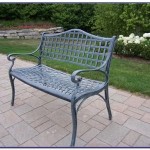How to Repair Outdoor Patio Chairs: A Comprehensive Guide
Outdoor patio chairs, designed to withstand the elements, inevitably succumb to wear and tear over time. Exposure to sun, rain, and temperature fluctuations can lead to material degradation, structural weakness, and aesthetic imperfections. Instead of replacing these chairs at the first sign of damage, a thorough repair can extend their lifespan and save significant costs. This article provides a detailed guide on how to assess damage, select appropriate repair materials, and execute repairs effectively, ensuring the continued functionality and appeal of outdoor patio chairs.
Before undertaking any repair project, it is crucial to understand the type of materials used in the construction of the patio chairs. Common materials include wood, metal (aluminum, steel, wrought iron), plastic (polypropylene, resin), and woven materials (wicker, rattan, mesh). The type of material dictates the appropriate repair methods and products. For instance, wood requires different treatments compared to metal or plastic. Knowing the composition of the chair is the first step towards a successful repair.
Assessing the Damage
The initial step in repairing outdoor patio chairs involves a thorough assessment of the damage. This assessment should encompass both structural and aesthetic aspects. Identifying the extent and nature of the damage will inform the repair strategy and material selection.
Begin by visually inspecting the chair for any obvious signs of damage. This includes cracks, splits, dents, rust, discoloration, and loose joints. Pay close attention to areas that are frequently subjected to stress, such as joints, legs, and seat supports. Rock the chair gently to check for instability, which may indicate weakened or broken components. Note all areas of concern, including the severity of the damage. For example, a small crack in wood may be repaired with wood glue, whereas a larger split may require wood filler or replacement of the entire piece.
For wooden chairs, check for signs of rot or insect infestation. Soft, crumbling wood or the presence of small holes may indicate these issues. Metal chairs should be examined for rust, which can compromise the structural integrity of the frame. Plastic chairs are prone to cracking and fading due to UV exposure. Woven chairs, such as those made from wicker or rattan, may unravel or break, especially in areas that experience heavy use.
Documenting the damage, ideally with photographs, is helpful for planning the repair process and tracking progress. This documentation serves as a reference point and assists in selecting the correct repair supplies. Detailed assessment is the cornerstone of a successful repair. Once the damage is thoroughly assessed, the next step is to gather the necessary tools and materials.
Selecting Repair Materials and Tools
The selection of appropriate repair materials and tools is critical for achieving a long-lasting and aesthetically pleasing result. The specific materials required will depend on the type of chair, the nature of the damage, and the desired outcome. Preparing a comprehensive list of supplies before beginning the repair will streamline the process and prevent interruptions.
For wooden chairs, essential repair materials include wood glue, wood filler, sandpaper (various grits), wood stain, paint, and sealant. Wood glue is used to repair cracks and reattach loose joints. Wood filler is used to fill gaps and imperfections. Sandpaper is used to smooth surfaces and prepare them for finishing. Wood stain and paint are used to match the existing color or create a new look. Sealant is used to protect the wood from moisture and UV damage.
For metal chairs, essential repair materials include rust remover, metal primer, metal paint, welding equipment (if necessary), and replacement hardware (screws, bolts, nuts). Rust remover is used to eliminate rust from the frame. Metal primer is used to create a protective barrier against rust and improve paint adhesion. Metal paint is used to restore the finish and protect the metal from corrosion. Welding equipment is required for repairing broken joints or frames. Replacement hardware is needed to replace damaged or missing fasteners.
For plastic chairs, essential repair materials include plastic adhesive, plastic filler, sandpaper, and plastic paint. Plastic adhesive is used to repair cracks and reattach broken pieces. Plastic filler is used to fill gaps and imperfections. Sandpaper is used to smooth surfaces and prepare them for painting. Plastic paint is used to restore the finish and protect the plastic from UV damage. In some cases, heat guns can be used to reshape and repair certain types of plastic.
For woven chairs, essential repair materials include replacement weaving material (wicker, rattan, mesh), scissors, pliers, and adhesive. Replacement weaving material should match the original as closely as possible in terms of color, texture, and size. Scissors are used to cut the weaving material to the desired length. Pliers are used to manipulate the weaving material and secure it in place. Adhesive may be used to reinforce the weave and prevent fraying.
In addition to the materials listed above, a general set of tools is essential for most patio chair repair projects. These tools include screwdrivers (various sizes), pliers, wrenches, hammers, sandpaper, paintbrushes, drop cloths, safety glasses, and gloves. Proper safety equipment, such as safety glasses and gloves, is crucial to protect oneself from potential hazards associated with repair work.
Executing the Repairs
With the damage assessed and the necessary materials and tools gathered, the next step is to execute the repairs. The specific repair techniques will vary depending on the type of chair and the nature of the damage. Careful attention to detail and adherence to best practices will ensure a successful and long-lasting repair.
For wooden chairs with cracks or loose joints, begin by cleaning the affected area to remove any dirt or debris. Apply wood glue to the crack or joint and clamp the pieces together until the glue dries completely. For larger cracks or gaps, use wood filler to fill the void. Allow the filler to dry completely and then sand it smooth with sandpaper. Apply wood stain or paint to match the existing finish, followed by a sealant to protect the wood from moisture and UV damage. Apply several thin coats, allowing each coat to dry completely before applying the next.
For metal chairs with rust, begin by removing the rust using a wire brush or rust remover. Apply metal primer to the clean metal surface to prevent further rust formation. Allow the primer to dry completely and then apply metal paint to restore the finish. For broken joints or frames, welding may be necessary. This should be performed by a qualified professional. Replace any damaged or missing hardware with new screws, bolts, or nuts. Apply a protective coating, such as wax or sealant, to prevent rust and corrosion.
For plastic chairs with cracks or breaks, begin by cleaning the affected area. Apply plastic adhesive to the crack or break and clamp the pieces together until the adhesive dries completely. For larger cracks or gaps, use plastic filler to fill the void. Allow the filler to dry completely and then sand it smooth with sandpaper. Apply plastic paint to match the existing finish. Avoid using excessive force when repairing plastic chairs, as this can cause further damage. Follow the manufacturer's instructions for the adhesive and paint to ensure proper bonding and durability.
For woven chairs with unraveling or broken strands, begin by carefully removing the damaged weaving material. Cut a piece of replacement weaving material to the desired length. Following the original weaving pattern, thread the replacement material through the frame, securing it in place with pliers or adhesive. Ensure that the weave is tight and uniform. For complex weaving patterns, it may be helpful to consult online resources or seek guidance from a professional weaver. Securing the ends properly will prevent further unraveling.
Throughout the repair process, it is important to work in a well-ventilated area and to wear appropriate safety gear. Follow the manufacturer's instructions for all repair materials and tools. Take breaks as needed to avoid fatigue. By following these steps carefully, it is possible to restore outdoor patio chairs to their former glory, extending their lifespan and saving money on replacements. Regularly maintaining the repaired chairs, such as cleaning them periodically and storing them properly during inclement weather, will further prolong their useful life.

How To Repair Outdoor Furniture Scratches Green With Decor

How To Replace Two Piece Sling Chair Fabric

How To Repair Outdoor Furniture Scratches Green With Decor

Replacing Repairing Dryrotted Fabric On Outdoor Furniture Hometalk

How Do You Reweb Outdoor Patio Furniture Hometalk

How To Save Yourself Money With Diy Patio Chair Repair

How To Save Yourself Money With Diy Patio Chair Repair

How To Repair A Patio Chair Woodsmith

How To Repair Outdoor Furniture Scratches Green With Decor

Wicker Furniture Repair Guide Jessica Welling Interiors
See Also








